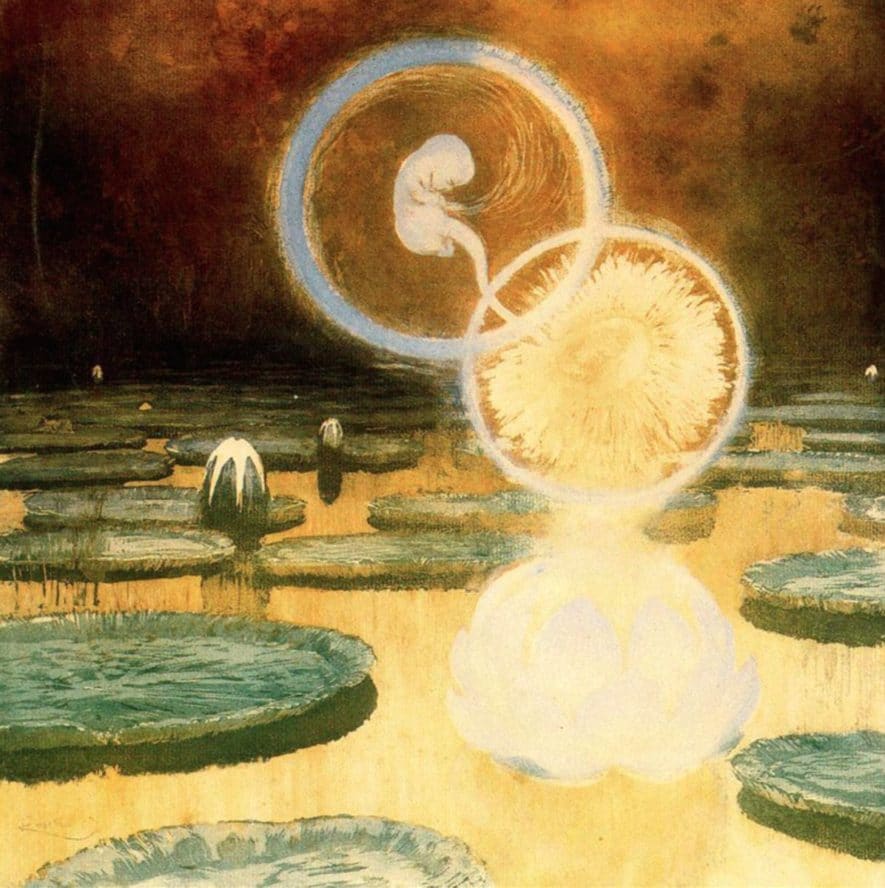around 1900
The Beginning of Life
author
Frantisek Kupka
description
Centre Pompidou, Musée National d’Art Moderne, Paris.
Coloured etching on paper.
Frantisek Kupka created this etching showing the influence of Symbolism in his Paris period. The dominant is a floating fruit enclosed in a circle and attached by an umbilical cord to a lotus flower. In this early-made painting, Kupka relied on religious images, especially Buddhism and Theosophy, to present general ideas of birth and renewal. The lotus flower, an important symbol of femininity and sexual union, is depicted here as the source of life itself. The circles are referred to the widespread practice of using halos, which in this work delimit the sacred space, emphasize that both the womb and the fetus are sacred. The interconnected main elements stand out in muffled tones of the background, and the repeating forms evoke a feeling of movement and light up from the lotus flower to the fetus through the solar uterus. This emphasizes the importance of birth and growth and the role that women play in this.
